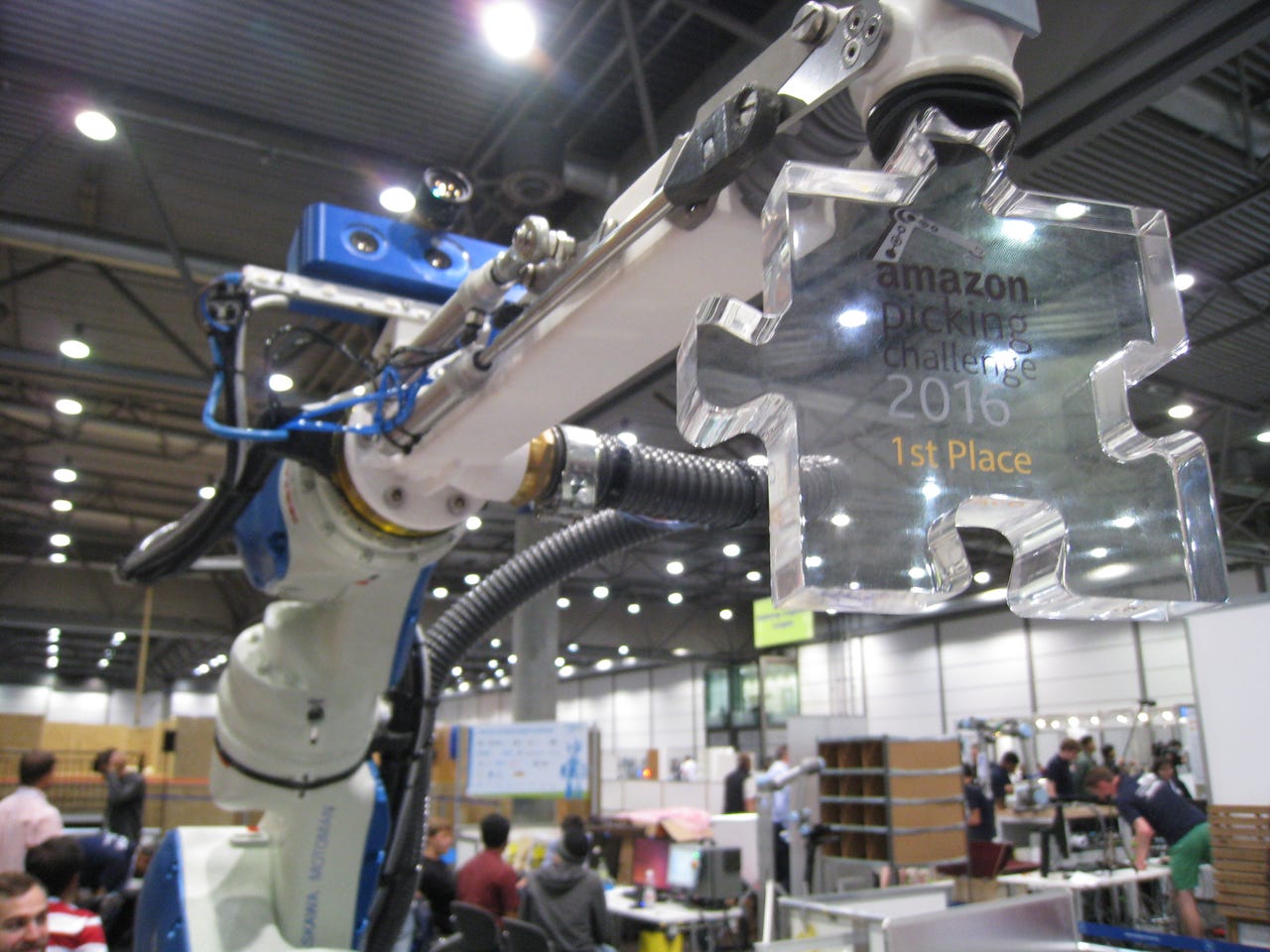Amazon Picking Challenge: Delft won but even the losing teams are celebrating


Image: Delft Robotics
It's no secret that Amazon is embracing industrial robots for fulfillment tasks, but now the company is looking to the academic community to bring even more automation to warehouses.
Robotics
The internet giant acquired Kiva Systems for $775 million in 2012, and now 30,000 robots zoom around Amazon's warehouses, using barcode infrastructure to locate and deliver shelves of products to stations where humans pick and pack the orders. But picking technology has improved in the last several years, and today's robots are more versatile, with the ability to identify and handle a wide variety of items.
To help showcase these advances, teams from 28 international institutions participated in the second annual Amazon Picking Challenge, which aims to "strengthen the ties between the industrial and academic robotic communities and promote shared and open solutions to some of the big problems in unstructured automation." The competition was held last week in conjunction with Robocup 2016 in Leipzig, Germany.
Teams competing in the challenge designed their own hardware and software to enable robots to autonomously pick items from shelves. Sixteen finalists then built their robots and tested them in a setting that simulated an Amazon fulfillment warehouse.
A pick task had robots retrieve 12 specific products from bins on an inventory shelf and put them in a tote. Secondly, a stow task required robots to take items out of a tote and put them into a shelving unit. Robots were given 15 minutes to complete each task, and they were scored by how many items were picked and stowed during that time. There were also penalties for damaging, dropping, or picking the wrong items.
The big winner was Delft Robotics, a team based in the Netherlands. Delft won both the pick and stow tasks. We reached out to Delft to ask how their robot was able to beat the competition. Team member Kanter van Deurzen explained:
I believe our critical success factor was that each individual component was of an industrial standard. Robotics, especially combined with dynamic path planning and 3d vision, requires a multidisciplinary approach. To pick up an item you need the robot, the path planning, the vision and the gripper to collaborate as one integrated system... Even though we saw components from competitors that on their own might perform better, we had the better system because all our components were tuned to each other and integrated perfectly.
Suction cups are a popular solution for picking, but a robotic vacuum doesn't always work for real-world situations. For that reason, the challenge included some items that can't be picked via suction because they are too heavy or have odd shapes that prevent uniform suction.
MIT's team experimented with a system that used both suction cups and a gripper that could grasp, scoop, and push objects. They didn't win the completion, but their overall concept -- a robot that has a combination of picking techniques -- could be critical in real world settings.
Although it was a competition, teams were encouraged to share their designs and learn from each other to help solve today's biggest challenges in automation.
MIT team member Alberto Rodriguez told ZDNet, "There were many different approaches and we definitely learned a lot from participating and chatting with other teams. We have a long list of ideas for when we come back next year."
He continued, "To me, that is a perfect example of why science and technology in the 21st century can move so fast. We can travel and we can exchange ideas faster than the giants on whose shoulders we are standing. It is very exciting to imagine where we will be 25 years from now."